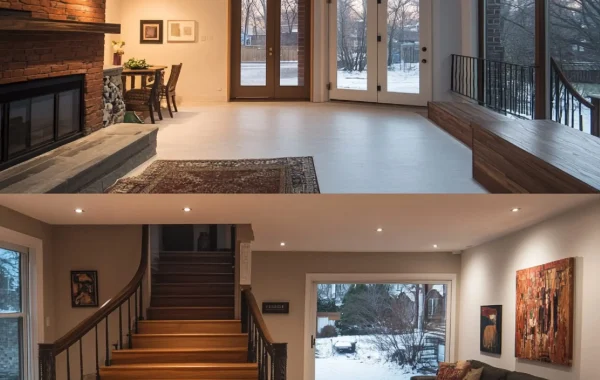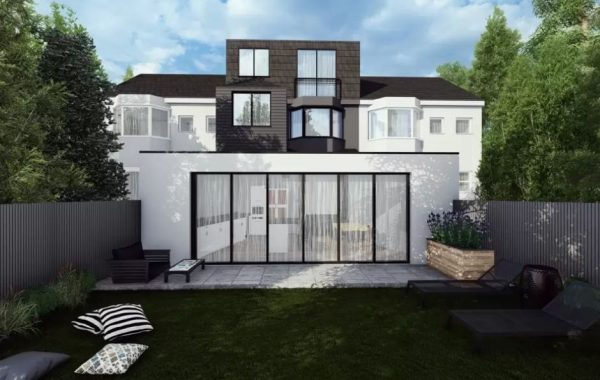The Hidden Layers of Planning Permission for Richmond Barnes Common: An Uncharted Exploration
Nestled in the heart of southwest London, Richmond Barnes Common stands as a vibrant testament to natural beauty and urban elegance. Known for its sprawling green spaces, historical landmarks, and charming residential areas, it offers a rare blend of pastoral serenity and city living. It’s no wonder that the area has become a sought-after location for homeowners and developers alike. However, one thing is clear: if you are planning to develop, renovate, or build in this desirable neighborhood, obtaining planning permission is an essential and complex task.
This is not your average guide to planning permission. In this article, we will venture beyond the standard regulations and explore the nuances of planning in Richmond Barnes Common in a way that has never been done before. From the unique challenges of preserving the area’s historical identity to understanding the subtleties of environmental considerations, this guide will unlock the hidden layers of the planning process in a way that is entirely new and tailored to this exceptional location.
Why Richmond Barnes Common is Unique: A Snapshot of the Area’s Charm
Before diving into the technicalities of planning permission, it’s important to understand what makes Richmond Barnes Common so special. The area is a rare mix of diverse architecture, open spaces, and proximity to nature, all framed by a rich history. The common itself, a space enjoyed by locals and wildlife alike, is a defining feature of the area. While modern conveniences and stylish homes surround the common, there is a concerted effort to maintain the harmony between development and nature.
The presence of the common means that developments must be carefully considered to minimize their impact on the green space. Richmond Barnes Common isn’t just another part of London; it is an area that places high value on conservation and maintaining its identity as a vibrant yet peaceful place. As such, the process of securing planning permission here is designed to balance growth with preservation, ensuring any new developments complement the existing surroundings.
The Challenges of Planning Permission in Richmond Barnes Common: A Complex Dance of Regulations
Planning permission in Richmond Barnes Common doesn’t follow the typical set of rules you might encounter elsewhere in London. The area’s unique character and its position within both a conservation area and near natural spaces bring specific challenges. These factors ensure that while development is welcomed, it must adhere to strict guidelines that focus on both aesthetic and environmental preservation.
1. Conservation Area Restrictions
One of the first considerations in securing planning permission in Richmond Barnes Common is the conservation area status. Many parts of this neighborhood are within conservation areas, meaning that any development must preserve or enhance the area’s character. For homeowners, this often means that even small changes — from replacing windows to installing new signage — require scrutiny.
Building within a conservation area does not mean that you cannot make changes to your property, but it does require a sensitive approach. Planning permission is typically required for any alterations to the external appearance of buildings, including extensions, new builds, and even certain repairs that may affect the visual integrity of the building. In these areas, it is crucial to work with professionals who understand the local guidelines and the broader architectural significance of the neighborhood.
2. Environmental Considerations: Protecting Green Spaces
Richmond Barnes Common is surrounded by rich greenery, and the common itself is a vital part of the local ecosystem. For developers, this means environmental considerations are paramount. Any development within or near these green spaces must ensure that it does not harm local flora and fauna or disrupt the ecological balance.
When applying for planning permission, you may be required to submit an environmental impact assessment (EIA), especially if your project involves significant alterations to the landscape. This could include construction of new buildings, excavation, or changes to water drainage systems. Developers are often required to prove that their project will not lead to soil erosion, flooding, or any form of environmental degradation.
3. Flood Risk Management
Due to the proximity to the River Thames, parts of Richmond Barnes Common may be at risk of flooding. The local council takes flood risk assessments seriously, particularly when approving developments in flood-prone zones. If your project falls within an area at risk of flooding, you will need to demonstrate how your development will address these challenges. This could include elevating buildings, incorporating flood barriers, or designing drainage systems to manage excess water.
Flood risk assessments are a critical component of the planning application process in areas like Richmond Barnes Common. If your development is likely to impact local flood dynamics, you will need to work with environmental engineers to develop a sustainable solution.
Navigating the Planning Process: Step-by-Step
Understanding the local landscape is key to navigating the often intricate planning process. Here’s a detailed, yet simplified, look at how to approach the planning application process in Richmond Barnes Common:
1. Engage with the Local Planning Authority Early
The first step in any development process is to engage with the local planning authority. In the case of Richmond Barnes Common, this means Richmond upon Thames Borough Council. Before submitting a full planning application, it’s often helpful to request pre-application advice. This consultation allows you to outline your plans and receive initial feedback, ensuring your proposal aligns with local policies.
2. Consider the Impact on the Local Community
One of the key aspects of the planning process in Richmond Barnes Common is its focus on community impact. Local authorities will evaluate how your development will affect the neighborhood. This includes assessing traffic flow, parking, noise levels, and the overall aesthetic of the area. A key factor in the approval process is ensuring your project will not overwhelm the local infrastructure or create an imbalance in the existing environment.
3. Submit a Comprehensive Application
Once you have fine-tuned your plans and gathered the necessary documentation, you will submit your formal planning application. This will include detailed architectural plans, environmental impact assessments, flood risk reports, and any other relevant documents. Your application will undergo a thorough review process where the planning committee will evaluate the overall impact of your project on the community, the environment, and the visual landscape of Richmond Barnes Common.
4. Public Consultation and Objections
As part of the application process, public consultation will be conducted, where neighbors and local residents have the opportunity to voice their opinions on the proposed development. Public objections can influence the council’s decision, so it’s important to consider community sentiment when preparing your plans.
5. Decision and Appeals
Once all the necessary assessments and consultations are completed, the planning committee will make its decision. If your application is approved, you will be given a formal approval notice, allowing you to proceed with your project. If your application is rejected, there is an option to appeal the decision, although this can be a lengthy and complex process.
Tips for Successful Planning in Richmond Barnes Common
Consult with Experts Early: Whether it’s a conservation area architect, environmental consultant, or a structural engineer, bringing in experts who are familiar with the local regulations and the challenges of developing in this unique area will increase your chances of success.
Respect the Local Character: Richmond Barnes Common is a place defined by its character. Successful developments will complement and enhance the area’s existing beauty rather than detract from it. Always be mindful of the historical and ecological significance of the location.
Prepare for Delays: The planning process can be slow, especially in an area with as many regulations and considerations as Richmond Barnes Common. Be patient, flexible, and prepared for the long haul.
Stay Informed: Planning regulations evolve, and staying up-to-date on the latest guidelines from Richmond Borough Council can help you avoid costly mistakes and delays.
Conclusion
Planning permission in Richmond Barnes Common is not simply about adhering to rules—it’s about understanding the unique balance between preserving the natural environment, maintaining the area’s architectural identity, and enabling thoughtful development. With careful planning, consultation, and attention to detail, developers and homeowners alike can contribute to this beautiful part of London while ensuring that it continues to thrive for generations to come. By respecting the community, the environment, and the heritage of Richmond Barnes Common, your project will not only meet the necessary regulatory requirements but will also stand as a lasting testament to the careful stewardship of this incredible space.





